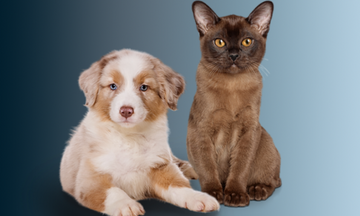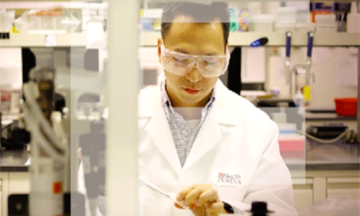微生物组基础知识

胃肠道是身体与环境的最大接触面。1肠道的作用远远不止消化。
虽然胃肠道(肠道)是食物消化和营养吸收的中心,但它对宠物的整体健康也起着关键作用。
肠道微生物组的已知功能包括:2、3
- 收集食物以作为能量
- 通过发酵和代谢活动为宿主提供营养
- 分解膳食纤维
- 形成免疫系统并维持稳态
- 处理多糖和维生素
- 产生激素
- 抵御肠道病原体
肠道是数百种不同的细菌和其他微生物(如原生动物、古生菌、病毒和真菌)的家园。
肠道中寄生着数以亿计的微生物 - 肠道中的微生物细胞数量至少与全身细胞数量相同。4当前文献估计有 1010-1014 个微生物细胞。2这些常居微生物(或共生菌)在能量调节、矿物质吸收、维生素合成、肠道屏障功能和免疫系统功能中发挥作用。它们还能提供抵抗病原体的屏障,并帮助滋养肠道。

探索Microbiome Forum的其他部分
了解更多信息
- Richards, P., Thornberry, N. A., & Pinto, S. (2021).The gut-brain axis: Identification of new therapeutic approaches for Type 2 diabetes, obesity, and related disorders. Molecular Metabolism, 46, 101175. doi:10.1016/j.molmet.2021.101175
- Belas, A., Marques, C., & Pomba, C. (2020).The gut microbiome and antimicrobial resistance in companion animals.In Duarte, A. & Lopes da Costa, L. (Eds.), Advances in Animal Health, Medicine and Production (1st ed.), pp. 233–245.Springer International Publishing
- Blake, A. B. & Suchodolski, J. S. (2016).Importance of gut microbiota for the health and disease of dogs and cats. Animal Frontiers, 6(3), 37—42. doi:10.2527/af.2016-0032
- Sender, R., Fuchs, S., & Milo, R. (2016).Revised estimates for the number of human and bacteria cells in the body. PLoS Biology, 14(8):e1002533. doi:10.1371/journal.pbio.1002533
- Oriach, C. S., Robertson, R. C., Stanton, C., Cryan, J. F., & Dinan, T. G. (2016).Food for thought: The role of nutrition in the microbiota-gut-brain axis. Clinical Nutrition Experimental, 6, 25–38.
- van Splunter, M., Lui, L, Joost van Neerven, R. J., WIchers, H. J., Hettinga, K. A., & de Jong, N. W. (2020). Mechanisms underlying the skin-gut cross talk in the development of IgE-mediated food allergy. Nutrients, 12, 3830. doi:10.3390/nu12123830
- Summers, S. C., Quimby, J. M., Isaiah, A., Suchodolski, J. S., Lunghoger, P. J., & Gustafson, D. L. (2019). The fecal microbiome and serum concentrations of indoxyl sulfate and p-cresol sulfate in cats with chronic kidney disease. Journal of Veterinary Internal Medicine, 33(2), 662–669. doi:10.1111/jvim.15389
- Suchodolski, J. S., Camacho, J., & Steiner, J. M. (2008). Analysis of bacterial diversity in the canine duodenum, jejunum, ileum, and colon by comparative 16S rRNA gene analysis. FEMS Microbiology Ecology, 66, 567–578.
- Suchodolski, J. S. (2011). Microbes and gastrointestinal health of dogs and cats. Journal of Animal Science, 89, 1520—1530. doi:10.2527/ jas.2010.3377
- Suchodolski, J.S. (2011). Intestinal microbiota of dogs and cats: a bigger world than we thought. Veterinary Clinics of North America Small Animal Practice, 41, 261—272. doi:10.1016/j. cvsm.2010.12.006
- Suchodolski, J.S.(2012). “Microbiota in health and disease.” Nestlé Purina Companion Animal Nutrition Summit, Lisbon, Portugal, pp. 33–37.
- Honneffer, J. B., Steiner, J. M., Lidbury, J. A., & Suchodolski, J. S. (2017). Variation of the microbiota and metabolome along the canine gastrointestinal tract. Metabolomics, 12, 26. doi:10.1007/s11306-017-1165-3



